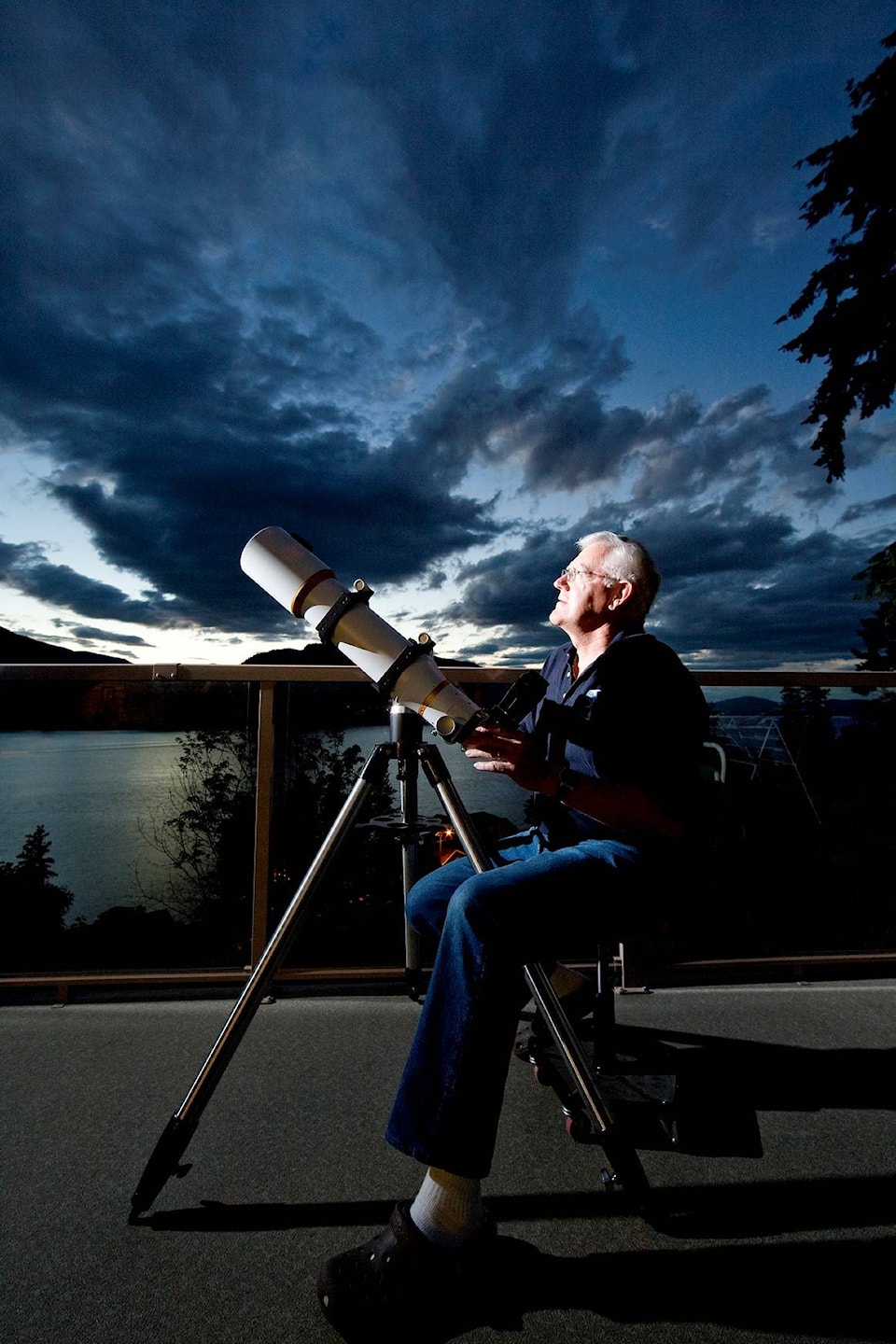April 2 – In the early hours this morning Mars and Saturn will celebrate the start of their 2018 journeys westward across the night sky. The two will meet low in the southern sky, just to the left of the top of Sagittarius’ ‘teapot’ lid. The two planets will appear just over a moon’s width apart, and thanks to Saturn’s greater distance they will exhibit similar brightness.
April 3 – The just past Full Moon will be close to Jupiter tonight with less than the width of three fingers separating them.
April 7 – Always game for a party, the waning gibbous Moon will gather with Mars and Saturn low in the southern sky just above the ‘Teapot’ in Sagittarius after midnight. The two planets will be seen just below the Moon.
April 8 – Algol, ‘the Devil Star’, will encore another performance this evening. The eclipsing binary star will be at minimum brightness from 10.24pm to 12.24am. You might compare its brightness with neighbouring stars in Perseus earlier in the evening and then revisit them again in the wee hours to detect the difference. A finder chart by Wikipedia can be found here: https://en.wikipedia.org/wiki/Perseus_(constellation)
April 8 – This is Last Quarter Moon night, stirring the pulse of deep sky observers, sketchers and imagers who are looking forward to the next dark sky period. The evening will be open to faint object adventures until the reverse half lit sphere peeps over the eastern mountains after midnight to light up the night.
April 12 – For those interested in adding the planet Neptune to their list of celestial objects, tonight the waning crescent Moon will provide a fingerpost. Look for the tiny blue disk with a telescope just a thumb width above the crescent.
April 15 – This is New Moon night with our neighbour safely tucked away near the Sun, leaving night skies dark for deep sky explorations and imaging.
April 17 – The ringed planet Saturn will rise over the eastern mountains after 1am tonight. Most any telescope will reveal the beautiful ring system. Because of its size, the solar system’s second largest planet will still put on quite a show even though it is now at aphelion, the farthest point in its orbit from the Sun.
April 17 – The thin fingernail paring crescent Moon enters the evening sky low in the west, just below bright Venus which getting into stride with its latest performance as our evening star for most of 2018.
April 18 – A nice backdrop augments any picture, and the Moon doesn’t like to miss a bet. This evening it will traverse the large Hyades open star cluster, posing in the midst of the stars of this beautiful gathering. Being at a modest waxing crescent phase, our bright neighbour will not drown out its surrounding attendants either.
April 20 – Those who enjoy special features in the night sky will be looking forward to the very bright appearance of Mars in late July. This opposition takes place not far from the planet’s perihelion, the nearest point in its orbit to the Sun and the Earth. By July 31 it will be ‘only’ 57.6 million kilometres away which will make it the brightest conjunction since 2003. For now, just a heads-up that the disk of our outer neighbour has now expanded to over 10 arc seconds in diameter which some regard as the threshold for useful telescopic observations of its surface markings, including the southern polar ice cap this year. By July 31 the ruddy disk will have swollen to 23.3 arc seconds, a bit shy of the 25.13” it reached in 2003.
April 22 - For lovers of meteor showers, this year’s Lyrids will not be seriously challenged by the waning crescent Moon. The best opportunity to view the ‘shooting stars’ will be from around 11pm to dawn as the radiant in the constellation Lyra, not far from bright Vega, climbs higher into the eastern sky.
April 22 – This is First Quarter Moon night with our half illuminated neighbour posing just below a fuzzy patch in the sky. This is the Praesepe open star cluster, better known as the ‘Beehive’ Cluster or Messier 44. Binoculars or a low power telescope will bring the individual cluster stars into sight.
April 24 – Moving steadily across the sky, the waxing gibbous Moon has entered the realm of Leo the Lion, King of the spring sky. Tonight the Moon and Regulus, the bright star at the bottom of Leo’s reverse question mark asterism, will be close together.
April 29 – This is Full Moon night, with the perfectly lit sphere rising over the eastern mountains as nightfall begins, checking out how spring is progressing in the Okanagan. Bright Jupiter will make room for the Moon in the small, faint constellation of Libra, the Scales.
April 29 – An illustration of how quickly tiny Mercury moves in its innermost orbit is the fact that tonight it is at greatest western elongation, just a month after passing in front of the Sun on April 1. This is not a very favourable opportunity to see the elusive planet since it remains close to the eastern horizon at dawn.
Dave Gamble
Special to the Morning Star
